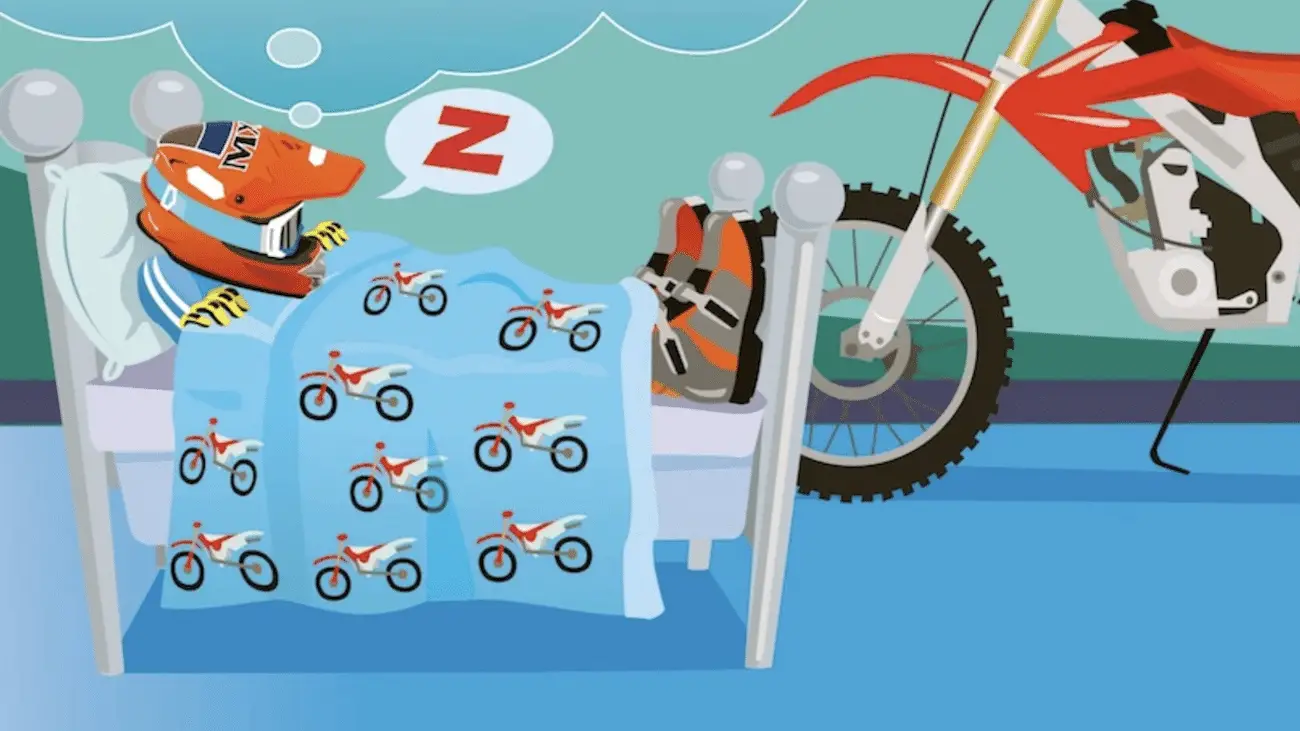TEN THINGS ABOUT SLEEP & THE RACING LIFE
(1) Sleep. Sleep is one of the basic necessities of life. It is as important for our well-being as food, water and air. Important as air? That’s right, and most of us take sleep for granted. Modern, industrialized society has allowed our food to be pumped full of additives, our water riddled with chemicals and the air we breathe polluted. And, the stress of daily life has begun to deprive us of sleep. The coffee industry is now a 30-billion-dollar-a-year industry. Why? To feed the sleep deprived the most widely used drug in the world, caffeine.
(2) Risk. If you are sleep deprived, you might recognize the negative effects. Without sleep, your body is being run down. Some of the repercussions of sleep deprivation include a weakened immune system, higher risk of disease and a shortened lifespan. This should raise red flags, right? But humans have a track record of waiting until it is too late.
(3) Sleeping awake. When we are sleeping, we may seem dead to the world, but our brains are still very active. For centuries, doctors believed that sleep was a period of brain inactivity, yet in the past 60 years, research has shown that the brain is still functioning at a high level. Some functions of the brain and body are actually more active during sleep than when we are awake.
(4) Rapid eye movement. There are five different stages of sleep, with the fifth being rapid eye movement, better known as REM sleep. REM sleep accounts for about 25 percent of the total sleep time for adults. It occurs in intervals during the night and is characterized by movement of the eyes. REM sleep is closely related to increased dreaming and body movements. During REM, the pulse and breathing rate are also heightened. Certain types of eye movements during REM sleep correspond to specific movements in dreams, suggesting at least part of the dreaming process is comparable to watching a film. In the REM cycle, your muscles become paralyzed. When this cycle of sleep is skipped and you get stuck in non-REM sleep, there is a possibility of sleepwalking.
(5) Dreams. Dreaming occurs all throughout the night in each of the five cycles of sleep. Most dreams occur in the REM stage, and these dreams tend to be more vivid. It is in the non-REM stage that all night terrors occur. There are varying explanations for why people dream, what dreams mean and their contribution to human health, but they are still somewhat of a mystery to scientists.
(6) Amount. Thirty million Americans are sleep deprived, and 20 percent of those get less than six hours of sleep a night. Healthy adults need seven to nine hours of sleep; however, there are exceptions, and many people are able to function without sleepiness or drowsiness after as little as six hours. Others can’t perform at their peak unless they’ve slept 10 hours. Note that anything less than five minutes to fall asleep at night means you’re sleep deprived.
(7) Circadian clock. The circadian clock coordinates our behavior with daily and seasonal changes in the day/night cycle. The internal clock is reset as we sense external time cues when the environment changes. In short, we develop a sleep pattern that is almost clock-like, which is why, after a hard work week, people can’t sleep in on the weekends no matter how hard they try. New schedules must be adapted to.
(8) Light. Light can affect sleep. It does so both directly, by making it difficult for people to fall asleep, and indirectly, by influencing the timing of our internal clocks. Due to the invention of the electric light bulb, we are now exposed to much more light at night. This affects our sleep patterns. Exposure to light in the late evening tends to delay the phase of our internal clock and leads us to fall asleep later than we would in a more natural-light setting.
(9) Chemicals. Many common substances affect both quantity and quality of sleep. These include caffeine, alcohol, nicotine, antihistamines, prescription medications and antidepressants. The human brain stores an important sleep-related chemical called adenosine when we are awake. Caffeine, the world’s most widely used drug, blocks the adenosine receptors in different parts of the brain. Because these nerve cells cannot sense adenosine, they maintain their activity and we stay alert.
(10) Environment. There are several variables that make up your sleep environment. They include light, noise and temperature. By being aware of the factors in your sleep environment that put you at ease and eliminating those that may stress or distract you, you can set yourself up for the best possible sleep.









Comments are closed.